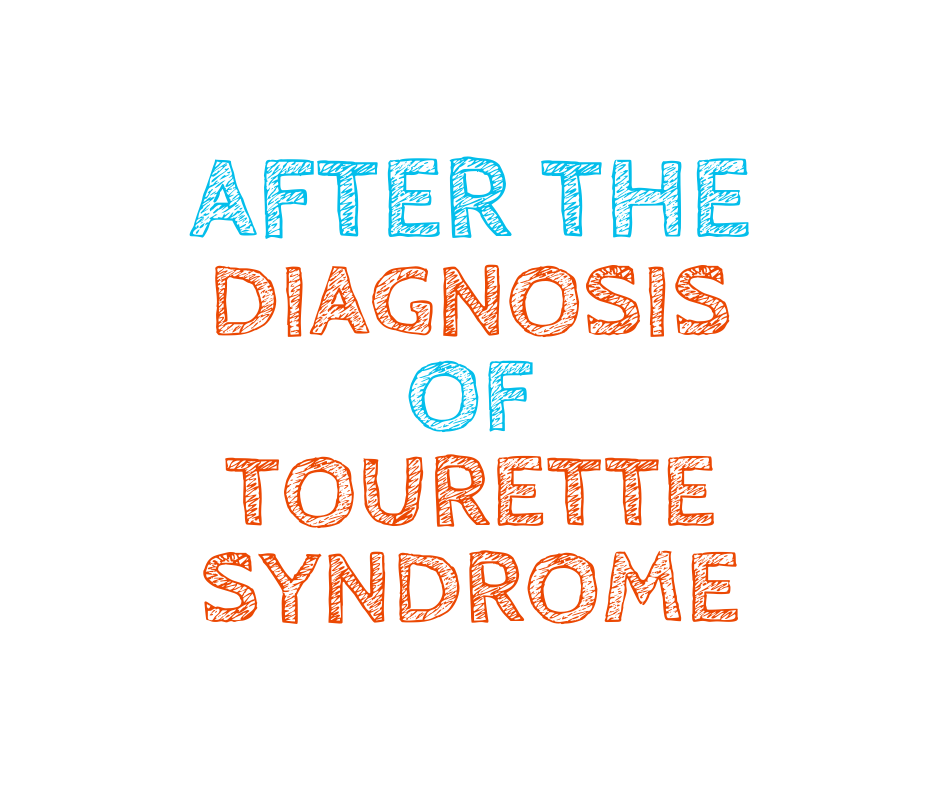Tourette Info
Tourette Syndrome is a neurological disorder that is characterized by tics–involuntary, rapid, sudden movements or vocalizations that occur repeatedly in the same way.
Symptoms include:
- Both multiple motor and one or more vocal tics present at some time during the illness although not necessarily at the same time.
- The occurrence of tics many times a day nearly every day or intermittently through the span of more than one year.
- Periodic changes in the number, frequency, type and location of the tics and waxing and waning in their severity. Symptoms can sometimes disappear for weeks or months at a time.
- Onset of symptoms is before the age of 18 and most people are diagnosed between the ages of 7 and 10.
Tourette Syndrome can be a very complex disorder and manifests very differently from one individual to another. See our TS Primer for additional information.
Commonly an individual will receive the diagnosis of Tourette Syndrome from a neurologist or psychiatrist. The diagnostic criteria for Tourette Syndrome, as published in the DSM-5 is as follows:
* Both multiple motor and one or more vocal tics have been present at some time during the illness although not necessarily concurrently. (A tic is a sudden, rapid, recurrent, nonrhythmic, stereotyped motor movement or vocalization.)
* Tics may wax and wane in frequency but have persisted for more than 1 year since first tic onset.
* The onset is before the age of 18 years.
* The disturbance is not due to the direct physiological effects of a substance (e.g., cocaine) or a general medical condition (e.g., Huntington’s disease or post-viral encephalistis).
Doctors rely not only on observation of tics but the family and individual’s report of symptoms. It is common for children to ‘suppress’ their tics (if able) when at a doctor’s appointment. Other methods such as video recordings or audio recordings can also be used in the documentation of symptoms for a physician. While tics are the outward symptom of TS, there are many associated disorders that commonly accompany the diagnosis.
Tourette Syndrome cases range from mild to severe. Many people with a mild case of TS may go undiagnosed. In these cases, the person’s tics are usually mild and can easily be disguised, masked or suppressed. On the other hand, a person’s tics and associated disorders can keep one from independently functioning in society and need assisted living for life. Of course, most cases fall somewhere in between, requiring some level of assistance such as advocacy, medical treatment, counseling, social skills training, accommodations and/or learning supports.
There are three classifications of tics; Vocal, Motor, and Mental. Tics can range from simple to complex. Simple tics generally involve only one muscle group or sound while Complex tics involve several muscle groups or several sounds. A brief list of examples follow:
| Simple Motor Tics | Complex Motor Tics |
|---|---|
| Eye Blinking | Jumping |
| Facial Grimaces | Spinning |
| Finger or toe Tapping | Arm Flapping |
| Licking Lips | Kicking |
| Hitting |
| Simple Vocal Tics | Complex Vocal Tics |
|---|---|
| Sniffing | Repeating Phrases |
| Throat Clearing | Stuttering |
| Grunting | Pressure of Speech |
| Humming | Muttering |
| Coughing | Talking to ones self |
| Spitting | Talking in multiple characters |
*For a more thorough list of tics please refer to our Symptom Sheet
Mental tics are thoughts that intrude into a person’s mind. These thoughts can be pleasant or scary. Mental tics cause an individual to be distracted, appear to be daydreaming or cause anxiety. The thoughts are usually unwelcomed and the individual has trouble putting the thoughts aside to concentrate on other matters. Mental tics can cause an individual’s emotions to change quickly. It is important to understand that like motor and vocal tics, mental tics are involuntary and often quite random.
Tics will wax (heighten in intensity) and wane (lessen in intensity) and are ever changing. Some tics may be present for a short time period of time, some may be present for a month or a year and yet others may persist throughout an individual’s entire lifespan. These are sometimes referred to as ‘resident tics’.
Tics are involuntary movements, utterances or thoughts. Most individuals with TS can suppress some or all of their tics for a limited amount of time but they will eventually need to release the tics. This release will result in more intensity of the tics and will cause increased anxiety. Thus, holding back tics is not recommended. (Suppressing is much like our ability to hold back a yawn or cough.)
When an individual suppresses one or more of their tics it can cause physical discomfort as well as requiring an incredible amount of concentration and energy. (Similar scenario is trying not to sneeze—it does not go away & takes a great deal of concentration to suppress.) These pent up tics must be let out at some point and after being suppressed there is often an ‘explosion’ of tics. Tics are often worse for a period of time after being held in or suppressed.
Although tics wax and wane with very little ability to predict the changes, tics are often exacerbated by stress, anxiety, and excitement. Additionally, when attention is drawn to a tic this increases stress and will most likely increase the tic.
Through the course of an individual with Tourette Syndrome’s life, puberty will often be the period of time when the tics are at their peak. This is believed to be from the increased hormonal changes and their effect on the chemical imbalance that is believed to cause TS.
Transition can also cause an increase in tics along with any change in routine. A problematic transition can be as little as stopping one activity to move onto another or as large as moving across the country.
Tics can be triggered, often by things in the person’s environment such as a sound, smell, object, or a person. For example; At the PATSA 2007 conference the theme was a Luau. In the corner of the room sat a very large inflatable monkey with a lei around his neck. Every time one particular attendee would pass the monkey, he would point to it and sing the ‘Vonage’ jingle: “whoohoo whoohooohoo, whoohoo whoohoohoo”. In this case the monkey was the trigger for this tic.
Some individuals with TS will feel the need to say or do “the most forbidden things”. Examples of these are: yelling “bomb” in an airport, pulling a fire alarm when there is no danger, sticking their fingers in a flame or placing their hand on the red coils of the stove.
Coprolalia-Inappropriate words or phrases; i.e. swearing, racial slurs, or sexual comments. This can be broken down into single words and short phrases or be full, complete sentences including a person’s name. (Only present in 5-15% off all individuals diagnosed with TS.) It is unclear what causes a person to exhibit this symptom and does not mean they are exposed to this type of language.
Copropraxia– inappropriate gestures or touching of self or others. Not necessarily in a sexual way. Examples are “middle finger tic”, touching groin, groin thrusting, touching someone’s hair etc.
Echolalia-Repeating another person’s words
Echopraxia– repeating another person’s actions
Palilalia- Repeating one’s own words
Coprographia– drawing or writing inappropriate things involuntarily
Tics are the outward symptom of TS that leads a doctor to diagnosis. However, TS does not stop with just tics. Tourette Syndrome is thought to be caused by a chemical imbalance in the brain especially pertaining to the neurotransmitters Dopamine and Serotonin.
The following is a list of commonly associated disorders that may be diagnosed in many individuals with TS. (This is not to imply that all individuals with TS will have each of these diagnoses or symptoms.)
ADHD/ADD-Attention Deficit Hyperactivity Disorder/Attention Deficit Disorder is the inability to focus or attend with or without hyperactivity and impulsivity (a neurodevelopmental disorder).
Anxiety Disorders/OCD/Phobias-Anxiety Disorders- Anxiety is excessive and has a negative impact on day to day living. There are many forms of anxiety disorders ranging from Generalized Anxiety Disorder, OCD, Panic disorders and Phobias to name a few. Obsessive Compulsive Disorder (OCD) causes a person to have intrusive thoughts that produce anxiety followed by an action or ritual the person performs to reduce the anxiety (a neurological disorder). Panic Attacks – will show physical signs of anxiety related symptoms; increased heart rate, elevated blood pressure, sweat, heavier breathing, light headed, etc. Phobias – A very strong, irrational fear of something that causes very little or no danger
Sensory Integration Disorder-is the inability to organize sensory information for the brain to use. The individual either becomes too stimulated through the five senses and neurologically overloads or the person does not have enough stimulation through the five senses resulting in added anxiety causing a neurological meltdown.
Sleep Problems—difficulty getting to sleep, staying asleep or staying awake. This typically will result with difficulty in waking due to the lack of quality sleep.
Mood Disorders – highly affected due to the lack of, or sensitivity to the chemical Serotonin
Learning Disabilities in the area of reading, writing, mathematics or listening skills
Dysgraphia-impairment of the ability to write.
Eye tracking problems-difficulty with the eyes moving together smoothly and quickly when engaged in a visual activity. Often presents as difficulty with comprehension and reading fluency, or the child may only read for a short period of time before tiring or getting a headache. http://www.ehow.com/about_5035607_symptoms-eye-tracking-problems.html
Executive Dysfunction-problems with organization, setting and achieving goals, starting tasks and projects, and adapting to change/transition
Perception Problems/Social Skills Deficit– tend to be 2-3 years behind in social development during elementary & adolescent years and can be very rigid in their thinking. Things are black or white with no gray areas.
Rage attacks/storms-neurological explosions that go beyond the point of being able to reason with the person. The degree of anger and aggression is grossly out of proportion to the provocation. The outburst is not typical of the person’s usual personality. Can leave the individual exhausted and they may have no recollection of the episode.
ODD– Oppositional Defiance Disorder is a pattern of disobedient, defiant behaviors toward authority figures
Autism Spectrum– Wide spread abnormalities of social interactions and communication
Slow Processing Speed– takes a person longer to make sense of information presented orally or in written form as well as a longer time to formulate an answer
Migraines– severe headaches that are often also associated with nausea/vomiting, dizziness, sensitivity to light sound and smell
Below is a list of characteristics that are common in those with TS and may or may not be shown to the level to receive a diagnosis of another associated disorder:
- Quick temper/overreaction
- Problems with organization
- Handwriting issues
- Impaired attention
- Over-activity
- Mood fluctuations
- Rigid thinking
- Perception Problems
- Need to have last word Argumentative
- Lack of Mental Brakes
- Difficulty with transition
- Sensitive to noises/light/touch/feel or may crave certain sensations.
Tourette Syndrome is a lifelong disorder with no cure. There are, however, many treatments that can be used to alleviate some of the symptoms of TS and the many associated disorders. It is important to note that there is no one treatment that works
for everyone affected by TS. Every case is different and should be closely monitored by a medical professional.
Physicians who are knowledgeable about treating individuals with TS will first consider the effects of the tics or symptoms that are troubling the individual. Only after such consideration should medications to control tics or other symptoms be recommended and discussed. Medications often have side effects and the long term effects of treatment must be considered before starting on any medication regimen.
There are only 2 FDA approved medications for the treatment of TS; Pimozide (Orap) and Haloperidol. Other neurologically based medications have proven effective to treat the many symptoms of TS and its associated disorders.
New developments in medications, therapy, nutritional recommendations continue to be researched for their effectiveness for those with TS. It is hopeful that one day research will be able to establish the exact cause of TS in order to pinpoint a treatment that will be effective for everyone with the disorder.
This question is unable to be fully answered until more research is done. But this is what we know so far: Approximately 60% of those with TS have inherited the disorder. This inherited type of TS is evidenced by an inversion on Chromosome 13; gene named SLITRIK1. Found by Yale Researchers in 2005. Statistics show that a parent with TS has a 50% chance of passing it on to their child. Additionally 3 times more boys have TS than girls—the reason for this is not yet understood.
Tics can be ritualistic or seem purposeful at times due to environmentally triggers. For example when the lights go down and the movie begins at a theatre, an individual may start having loud vocal tics. While this can very easily be misinterpreted as a defiant child or disrespectful teenager, it is very likely that it is a direct result of the individual knowing they have to be quiet, causing additional stress and in turn exacerbating their vocal tics. This is just one of thousands of examples of how TS is misinterpreted on a daily basis by parents, teachers, friends and community members.
Tourette syndrome is considered a lifelong disorder. Onset of symptoms have been notated as early as infancy. Most start exhibiting symptoms around the age of 5 and receive a diagnosis between the ages of 6-8; commonly beginning with simple tics such
as eye blinking and humming or throat clearing. Symptoms can come and go as well as change quite frequently. Symptoms often progress into more complex tics as the child reaches adolescence. This is believed to be caused by puberty/hormones. As an individual reaches adulthood (late teens/early twenties) approximately 1/3 report their tics decrease, 1/3 report their tics almost complete subside and only return during stressful times, and the other 1/3 report that their tics have stayed the same. So an individual will not full ‘outgrow’ their tics, however symptoms often decrease as a person ages. Females report that during pregnancy and menopause they often experienced an increase in tics.
Tourette Syndrome itself does not affect an individual’s intelligence, however many will need some specialized assistance. Some individuals will require support in the form on an IEP (individualized education plan), other’s will need a GIEP (gifted individualized education plan), and many can receive the support they need through a 504 plan. Based on the severity of the tics and the co-occuring disorders accommodations in school will range from additional breaks throughout the school day to a one-on-one Para-educator. This is on a case by case basis. The PATSA has Consultants available to help you navigate the school system and develop the appropriate plan for your child.
A person’s ability to hold a job depends greatly on the severity of their tics and co-occuring disorders. Most individuals with TS are highly successful in their chosen career including pro athletes, brain surgeons, tattoo artists, teachers, bankers and the list goes on! There is only a very small percentage of individuals that have TS to such a severe and debilitating degree that it prevents them from holding a job. For those individuals, it can be a long process but they may qualify for Social Security.
PATSA serves all 67 counties of PA! If we can be any help to you or your family please don’t hesitate to call 1-800-990-3300 or email info@patsainc.org!
CHAD- Children and Adults with attention deficit/hyperactivity disorder; http://www.chadd.org/
OCD Foundation- http://www.ocfoundation.org/
PEN-Parent Education Network- http://www.parentednet.org/
The PEAL Center- The Parent Education & Advocacy Leadership Center- http://pealcenter.org





